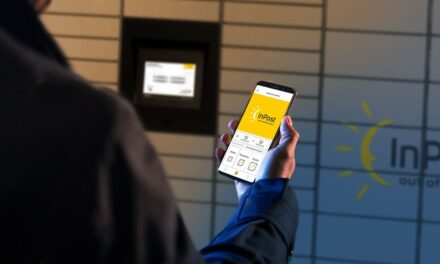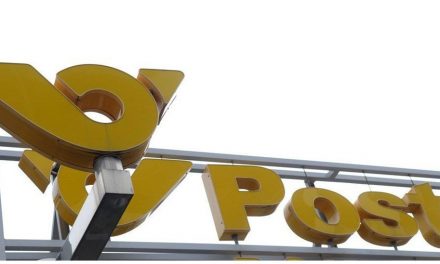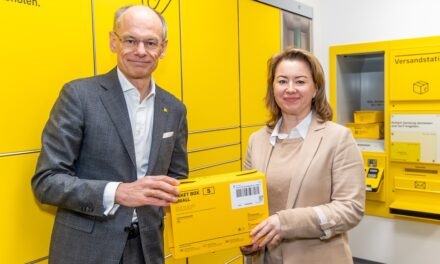
Attracting the crypto heavies

We spoke to Patricia Liebermann, Head of Philately at Austria Post, to find out how the Post is continuing to push the boundaries for crypto stamps as it begins work on its 5th issue. From gamification to special art and mystery boxes – hear how philately has moved into the 21st century.
Take me back to 2019, why did Austria Post decide to develop its first crypto stamp?
In 2019 we were faced with a decreasing number of subscriptions for special stamps – we knew we needed to make a change and started looking at how we could transform philately. We came up with lots of ideas on how to digitise our offerings and create a new breed of collectable.
Were you hoping to reach a new audience?
We started the project by doing lots of research and discovered we were focussing all our efforts on attracting our current subscribers – the traditional stamp collectors. We realised we had forgotten an entire potential audience – the new generation of stamp collectors we call the ‘crypto heavies’.
 How did you develop the first crypto stamp?
How did you develop the first crypto stamp?
It was a step-by-step process. At first, we were just thinking of having an existing stamp which we can put to the blockchain. But during the innovation process, we came up with the idea of creating something completely new. We also added the gamification factor so when you scan the crypto stamp, you will see the rarity as well as having the stamp in your hand. Only one percent of Crypto stamps have a red digital twin, these are the rarest and most sought after.
What was the reaction to the crypto stamps?
When we released stamp 1.0 in 2019 we were the first postal operator to establish a crypto stamp which has physical assets. They were sold out within weeks. It’s exciting to have led such a transformation of a traditional space. We issue around 150,000 to 240,000 crypto stamps each year, and we have sold out every year.
How does that compare to your figures for special stamps?
Usually we need around six to eight months to sell out special stamps. So there is a much faster turnover. And another interesting figure is when we started to promote the crypto stamp we invited people to subscribe for a newsletter. And initially we had around 300 national subscribers and 150 international subscribers and now we are around 8,000 subscribers, and around 5,000 International subscribers which is a huge increase.
Would you compare the experience of buying a crypto stamp to buying a ticket for a festival or a sought-after concert?
That is absolutely the right description! When we issued the first crypto stamp, our shop crashed which was a huge issue. Normally when we put our special stamps into the online shop we have a really stable connection but here there were 2,000 people who wanted to push the ‘sale’ button at the same time. We realised we needed to change the system for it to work. I used the example of queuing online for a Robbie Williams concert – we had to work out the requirements for a system to cater for that type of capacity – it was a new challenge for us.
 Do any of your crypto stamps stand alone?
Do any of your crypto stamps stand alone?
No they always have a physical twin. So with each crypto stamp you will receive a customised wallet and you will receive an NFT (non-fungible token). You will also have a regular stamp which you can put on an envelope. It is a hole in one product – it has everything.
Do you refer to traditional stamps differently now you have crypto stamps?
Yes! We call them phygitals.
Do you have any data on the age range of the people who are buying the crypto stamps?
As As you know the whole crypto scene is very anonymous and people don’t want to put any concrete data online but I would say it is mostly the younger age bracket between 18-30 who are into the crypto scene.
So you have brought a new audience to stamps?
Absolutely. We describe them as the young generation of collectors because they have the same passion. The Philately Department creates award-winning stamps and brings out quality collectable products every year, now we have an extra market from them. The quality standards our new collectors are getting to know have been honed by the traditional collectors before them. And funnily enough they are as picky and specific about what they want as traditional collectors and they also complain about the same things.
What kind of things do they complain about?
They worry whether their stamp is original or not.
Is there a problem with fake crypto stamps?
With version 1.0 there was a lot of fraud – some people were printing their own copies and with 2.0 some customers using super-bright lights to try and read the secret word list through the paper. So with every issue we have had to increase our security.
For example in our latest version, 4.0, there is an NFC chip which you can scan on your smartphone to check that your Crypto stamp has not been activated yet. As well as the NFC chip, on the back side there is a secure foil and when you open the foil it reacts with oxygen and so you can be sure that no one had already accessed the passwords or transferred the digital twin.
Do you find each time you release a new crypto stamp there is a pressure to give the collectors something extra?
Inventing a new iteration of a new crypto stamp is always fun. We receive lots of feedback from the community about what a Crypto stamp could become. We love to integrate those ideas and improvements, we don’t see it as pressure, for us it’s: “challenge accepted”. So, from version 1.0 to version 4.0, we have added new features and innovations. From version 1.0 to 2.0 we moved from plastic to paper. It was really important to us to make issuing stamps more sustainable. 3.0 had an innovation as we included NFC chips into the stamp and the latest release (4.0) features augmented reality so the bull featured on the stamps is brought to life.
Can you tell me about the crypto stamp art project?
Last July we issued the first crypto stamp art project together with Austria’s most successful NFT artist PR1MAL CYPHER. So this is a little bit different to the normal crypto stamp with a crypto animal on it. With these stamps you have a mystery box where you can first reveal your digital twin and afterwards you will receive a one-off special art stamp by post in addition to your NFT.
Dealing with security concerns and gamification are not traditional skills for philatelists – the crypto stamps must have changed the makeup of the philately department?
It is a funny because when I started at Austria Post in 2017, finding people to work in the philately department was quite difficult as it is quite a niche, traditional field. But today we need crypto designers, software developers and security specialists. The crypto stamps we are creating are state of the art projects so working in philately has suddenly become a job of the future. It has really raised the potential of recruitment from an HR perspective.
Were there any obstacles to creating NFTs – were people concerned about moving to less traditional stamps?
Not really, because we did not see it as a competition to our regular stamp issues. We see it as an extension to physical stamps.
Do you think Austria Post will eventually phase out physical stamps?
No, and we have had a lot of feedback from our community that this is the direction to go and what our customers are looking for. We just returned from a big NFT convention in London and we saw that the most successful projects are those that have a physical issue related or connected to a digital asset. That’s the future.
How is marketing a crypto stamp different from marketing a physical stamp?
 It is much faster and we have different social media channels as well as networks like Reddit. But the funny thing is that most of the time we are not the primary marketers for crypto stamps. People are establishing groups and communities on their own, where they discuss crypto stamps and invite people to post and give feedback which is fantastic to see.
It is much faster and we have different social media channels as well as networks like Reddit. But the funny thing is that most of the time we are not the primary marketers for crypto stamps. People are establishing groups and communities on their own, where they discuss crypto stamps and invite people to post and give feedback which is fantastic to see.
Tell me about your most recent release?
In September 2022 we released our first joint issue worldwide together with Post NL. From a philatelic aspect this was another innovation and it was also the Netherland’s first crypto stamp.
How was the partnership innovative?
Having joint issues is pretty commonplace for special stamps but for crypto stamps it is the first partnership of its kind. Both Austria Post and Post NL issued a crypto stamp featuring the same motif of the bull but with different designs based on the national colours and incorporating the two countries’ typical floral species. The Austrian version featured edelweiss and the Netherlands featured tulips.
What are your plans for releasing crypto stamps in 2023?
We are going to develop our cryptosystem further. We have received a lot of requests – from over 20 postal organisations to work together on a crypto stamp with Austria Post. So we are in the midst of a selection process.
That’s amazing that so many postal operators are recognising your expertise
Exactly! It like we are really spreading the news about crypto stamps! The crypto stamps have definitely expanded the external reach of our organisation. We are now looking for the next innovation and we are thinking how we can transform our crypto stamp to the next level for 5.0.
 About Patricia
About Patricia
Patricia Liebermann, Head of Philately at Austrian post office, Österreichische Post AG. Expert in innovation, design, and idea generation. In 2019 she embarked on a new journey with a unicorn – the world’s first blockchain postage stamp. Within a few years of launch, Crypto stamp had grown to become a profitable viral brand with a full-time team. Getting a life-changing product into the hands of millions of people is her calling. Patricia understands phygitals are around to stay and haven’t yet reached their full potential. Therefore: Never give up until you have a unicorn. www.cryptostamp.com












